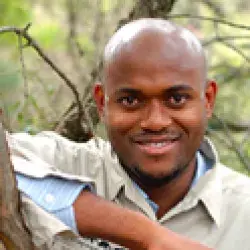Returning to the Field
We would like to wish everyone a Happy New Year and very warm wishes for 2010. We apologise for slowing down in blog updates, but hopefully this year we will pick up the slack and you guys can see how we are doing regarding meeting our project goals. It is our hope that this year we will accomplish a lot and thank you all for your continued support. We hope you feel as much part of this process as we are and we will do our best to account for all your queries even though it is not always easy.
I must confess it is a great feeling to be back in the field after seven months of studying at Oxford. After driving through the gate at Orpen and driving up to Satara I had feelings of resounding joy, like I was home. I filled my sinuses with fresh air from the outside and was about to close my eyes and get lost in the moment when I realised that I was driving. I gave up that silly, but tempting thought all together and concentrated on the road ahead. Nnzumbeni and I arrived at Singita late in the afternoon, where my carrot-seed-covered socks awaited me; they were all there, every single one of them (with the seeds). Ouch!
The following day I had meetings with Caroline Burke, the new General Manager at Singita KNP and Matthew Harding, Singita KNP’s Head Guide. The meetings went well and they said that they understood and appreciated the conservation problems that we were faced with. After that Nnzumbeni and I went in to the concession to collect cameras. Most of the cameras were not too far from the road, so we didn’t struggle to find them. The only difficulty was that the grass had grown around the cameras engulfing them. Later near one of the cameras we found an extremely faint track that resembled a carnivore’s. That was enough to ignite a debate as to which species the track belonged to. The debate went on even though the air around us reeked of a bull elephant in musth. The big fella must have been looking at us lesser beings discussing the soil from a distance and was just too lazy to confront us.
NAKEDI: thought it was a leopard and was already taking pictures and GPS readings. (?)
NNZUMBENI: thought it was a hyena as the track had claw marks.
COMMON SENSE: thought it was probably a porcupine.
VERDICT: It was definitely a porcupine track, end of story!
We returned the following day with someone who is competent at handling a rifle. Along the way we came across a breeding herd of elephants and I immediately thought of hiding the cameras that lay in the back seat of the research vehicle. I had a disturbing feeling that they might just approach the car and deliberately rob us of the cameras just so they can kick them around like they were soccer balls. I have a sneaky feeling that elephants enjoy kicking cameras because the world cup is coming to South Africa and soccer fever is in the air. (?) Or they are just upset that the official mascot of the FIFA World Cup is a leopard. The mascot’s name is ZAKUMI. I wonder if he would be keen to visit the Leopard Project after his work is done.
Collen Sibuyi, a promising young guide who has just completed his guiding course, but with vast field experience as he used to be a tracker, agreed to accompany us to collect the cameras that were left in dodgy parts of the concession. I’m talking about along the river banks and areas surrounded by thick foliage, the kind of places you’d wish there was a door on which to knock first before proceeding. Most of them had leopard signs in the form of tracks. Later in the afternoon we went back with Daniel Sibuyi and Andrew Mathebula (trackers) who helped us collect the rest of the cameras.
Now we are busy collating all the results that we have obtained since April. Next week we will send an update on all the results and the next steps in our leopard work (with lots of pictures). Thank you again for your valued support without which this and other AWF activities would be near impossible to achieve.
